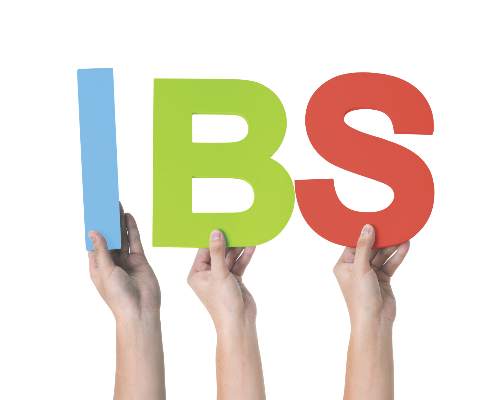User login
American Gastroenterological Association (AGA): James W. Freston Conference
New insights into IBS visceral hypersensitivity
CHICAGO – New evidence is shifting attention from low-grade inflammation to mast cell activation as a driving mechanism behind visceral hypersensitivity in irritable bowel syndrome (IBS).
Low-grade inflammation has been intensely studied as a major mechanism of visceral hypersensitivity in the gut wall ever since the observation that interleukin-1beta (IL-1b), lamina propria T lymphocytes, and enterochromaffin cells are overexpressed in patients who develop IBS following a gastrointestinal infection, according to Dr. Guy Boeckxstaens of the Translational Research Center for GI Disorders, KU Leuven (Belgium) University Hospital.
Studies have also reported increased release of cytokines by peripheral blood mononuclear cells in patients with IBS, compared with healthy controls, and that this activates afferent nerve fibers by IL-1b and tumor necrosis factor-alpha (TNF-alpha) (Gut 2013;62:1456-65).
Though interesting findings, they have not been confirmed, and several studies have reported no difference in cytokine expression, cytokine serum levels, or number of immune cells in patients with IBS, he said.
Among them is a systemic review and meta-analysis showing no significant difference in levels of IL-10 and TNF-alpha serum/plasma levels between patients with IBS and healthy controls (Neurogastroenterol Motil. 2014 Jul;26:1036-48).
The strongest argument against a significant role for low-grade inflammation, however, lies in two recent randomized, clinical trials that found no significant overall effect on IBS symptoms with 12-week treatment with the anti-inflammatory drug mesalazine, compared with placebo in patients with IBS (Gut 2014 Dec 22. doi: 10/1136/gutjjnl-2014-308188. [Epub ahead of print]) or diarrhea-predominant IBS (Gut 2015 Mar 12. doi: 10.1136/gutjnl-2015-309122. [Epub ahead of print]), Dr. Boeckxstaens observed.
“On the whole, and I know I’m very provocative here, there is no or just a very minor role for low-grade inflammation in the pathophysiology of IBS visceral hypersensitivity,” he said at the conference sponsored by the American Gastroenterological Association.
Instead, in his view, a more likely mechanism is mast cell activation, an idea first put forward in 2004. In particular, it is that mast cell activation, through release of mediators such as histamine, serotonin, and proteases, can lead to activation, sensitization, and upregulation of nociceptors, leading to visceral hypersensitivity in the gut wall. How these mast cells are activated is the “$10 million question,” Dr. Boeckxstaens acknowledged.
Stress is clearly a trigger in IBS and, at least in animal models, has been shown to induce eosinophils to release corticotropin-releasing hormone, which activates mast cells. But he posits that chronic inflammation and infection may also trigger a bystander immune response against innocent antigens.
“We all know that we have tolerance to food, to bacteria present in our gut, but an inflammatory response can interfere with this mechanism,” he said. “We reason that if you have an infection, a danger signal, that this danger signal may trigger an immune response against innocent antigens present at that moment and if you then reexpose the immune system to these antigens, you may trigger an immune response, activate mast cells, and in that way lead to afferent nerve dysfunction and increased hypersensitivity.
“It’s all very speculative, but I think it’s a very interesting new scheme,” he added.
To test this theory, Dr. Boeckxstaens and his colleagues infected Th2-background mice with Citrobacter and at the same time exposed them to ovalbumin antigen or placebo. As expected, there was an inflammatory response and increased abdominal pain that normalized after 4 weeks, but intriguingly, when they began feeding the mice again, hypersensitivity returned at 7 weeks only in the mice exposed to ovalbumin antigen during infection. Further, treatment at 7 weeks with the mast cell stabilizer doxantrazole reversed the hypersensitivity, “showing that mast cells indeed seemed to be activated if you reexposed these mice,” he said.
Dr. Boeckxstaens pointed out that a recent German study in humans fits nicely with this idea, reporting that diluted food antigens delivered directly into the duodenum caused mucosal responses in two-thirds of patients with IBS and suspected food intolerance and increased intraepithelial lymphocytes (Gastroenterology 2014 Nov; 147:1012-20.e4).
Recent evidence also points to the role of upregulation and sensitization of pronociceptive receptors/channels in IBS visceral hypersensitivity. Unpublished data from Dr. Boeckxstaens’ lab using supernatant of diarrhea-predominant IBS patients show that histamine sensitizes transient receptor potential vanilloid 4 (TRPV4), TRPV1, and transient receptor potential ankyrin 1 (TRPA1) on human submucosal neurons through H1-receptor activation.
Though much of this may seem a long way from clinical practice, he observed that 12-week treatment with the histamine-1 antagonist ebastine more than tripled the percentage of IBS patients with at least considerable relief of IBS symptoms, compared with placebo in a double-blind, randomized trial involving 55 patients.
Dr. Boeckxstaens reported no financial conflicts of interest.
On Twitter @pwendl
CHICAGO – New evidence is shifting attention from low-grade inflammation to mast cell activation as a driving mechanism behind visceral hypersensitivity in irritable bowel syndrome (IBS).
Low-grade inflammation has been intensely studied as a major mechanism of visceral hypersensitivity in the gut wall ever since the observation that interleukin-1beta (IL-1b), lamina propria T lymphocytes, and enterochromaffin cells are overexpressed in patients who develop IBS following a gastrointestinal infection, according to Dr. Guy Boeckxstaens of the Translational Research Center for GI Disorders, KU Leuven (Belgium) University Hospital.
Studies have also reported increased release of cytokines by peripheral blood mononuclear cells in patients with IBS, compared with healthy controls, and that this activates afferent nerve fibers by IL-1b and tumor necrosis factor-alpha (TNF-alpha) (Gut 2013;62:1456-65).
Though interesting findings, they have not been confirmed, and several studies have reported no difference in cytokine expression, cytokine serum levels, or number of immune cells in patients with IBS, he said.
Among them is a systemic review and meta-analysis showing no significant difference in levels of IL-10 and TNF-alpha serum/plasma levels between patients with IBS and healthy controls (Neurogastroenterol Motil. 2014 Jul;26:1036-48).
The strongest argument against a significant role for low-grade inflammation, however, lies in two recent randomized, clinical trials that found no significant overall effect on IBS symptoms with 12-week treatment with the anti-inflammatory drug mesalazine, compared with placebo in patients with IBS (Gut 2014 Dec 22. doi: 10/1136/gutjjnl-2014-308188. [Epub ahead of print]) or diarrhea-predominant IBS (Gut 2015 Mar 12. doi: 10.1136/gutjnl-2015-309122. [Epub ahead of print]), Dr. Boeckxstaens observed.
“On the whole, and I know I’m very provocative here, there is no or just a very minor role for low-grade inflammation in the pathophysiology of IBS visceral hypersensitivity,” he said at the conference sponsored by the American Gastroenterological Association.
Instead, in his view, a more likely mechanism is mast cell activation, an idea first put forward in 2004. In particular, it is that mast cell activation, through release of mediators such as histamine, serotonin, and proteases, can lead to activation, sensitization, and upregulation of nociceptors, leading to visceral hypersensitivity in the gut wall. How these mast cells are activated is the “$10 million question,” Dr. Boeckxstaens acknowledged.
Stress is clearly a trigger in IBS and, at least in animal models, has been shown to induce eosinophils to release corticotropin-releasing hormone, which activates mast cells. But he posits that chronic inflammation and infection may also trigger a bystander immune response against innocent antigens.
“We all know that we have tolerance to food, to bacteria present in our gut, but an inflammatory response can interfere with this mechanism,” he said. “We reason that if you have an infection, a danger signal, that this danger signal may trigger an immune response against innocent antigens present at that moment and if you then reexpose the immune system to these antigens, you may trigger an immune response, activate mast cells, and in that way lead to afferent nerve dysfunction and increased hypersensitivity.
“It’s all very speculative, but I think it’s a very interesting new scheme,” he added.
To test this theory, Dr. Boeckxstaens and his colleagues infected Th2-background mice with Citrobacter and at the same time exposed them to ovalbumin antigen or placebo. As expected, there was an inflammatory response and increased abdominal pain that normalized after 4 weeks, but intriguingly, when they began feeding the mice again, hypersensitivity returned at 7 weeks only in the mice exposed to ovalbumin antigen during infection. Further, treatment at 7 weeks with the mast cell stabilizer doxantrazole reversed the hypersensitivity, “showing that mast cells indeed seemed to be activated if you reexposed these mice,” he said.
Dr. Boeckxstaens pointed out that a recent German study in humans fits nicely with this idea, reporting that diluted food antigens delivered directly into the duodenum caused mucosal responses in two-thirds of patients with IBS and suspected food intolerance and increased intraepithelial lymphocytes (Gastroenterology 2014 Nov; 147:1012-20.e4).
Recent evidence also points to the role of upregulation and sensitization of pronociceptive receptors/channels in IBS visceral hypersensitivity. Unpublished data from Dr. Boeckxstaens’ lab using supernatant of diarrhea-predominant IBS patients show that histamine sensitizes transient receptor potential vanilloid 4 (TRPV4), TRPV1, and transient receptor potential ankyrin 1 (TRPA1) on human submucosal neurons through H1-receptor activation.
Though much of this may seem a long way from clinical practice, he observed that 12-week treatment with the histamine-1 antagonist ebastine more than tripled the percentage of IBS patients with at least considerable relief of IBS symptoms, compared with placebo in a double-blind, randomized trial involving 55 patients.
Dr. Boeckxstaens reported no financial conflicts of interest.
On Twitter @pwendl
CHICAGO – New evidence is shifting attention from low-grade inflammation to mast cell activation as a driving mechanism behind visceral hypersensitivity in irritable bowel syndrome (IBS).
Low-grade inflammation has been intensely studied as a major mechanism of visceral hypersensitivity in the gut wall ever since the observation that interleukin-1beta (IL-1b), lamina propria T lymphocytes, and enterochromaffin cells are overexpressed in patients who develop IBS following a gastrointestinal infection, according to Dr. Guy Boeckxstaens of the Translational Research Center for GI Disorders, KU Leuven (Belgium) University Hospital.
Studies have also reported increased release of cytokines by peripheral blood mononuclear cells in patients with IBS, compared with healthy controls, and that this activates afferent nerve fibers by IL-1b and tumor necrosis factor-alpha (TNF-alpha) (Gut 2013;62:1456-65).
Though interesting findings, they have not been confirmed, and several studies have reported no difference in cytokine expression, cytokine serum levels, or number of immune cells in patients with IBS, he said.
Among them is a systemic review and meta-analysis showing no significant difference in levels of IL-10 and TNF-alpha serum/plasma levels between patients with IBS and healthy controls (Neurogastroenterol Motil. 2014 Jul;26:1036-48).
The strongest argument against a significant role for low-grade inflammation, however, lies in two recent randomized, clinical trials that found no significant overall effect on IBS symptoms with 12-week treatment with the anti-inflammatory drug mesalazine, compared with placebo in patients with IBS (Gut 2014 Dec 22. doi: 10/1136/gutjjnl-2014-308188. [Epub ahead of print]) or diarrhea-predominant IBS (Gut 2015 Mar 12. doi: 10.1136/gutjnl-2015-309122. [Epub ahead of print]), Dr. Boeckxstaens observed.
“On the whole, and I know I’m very provocative here, there is no or just a very minor role for low-grade inflammation in the pathophysiology of IBS visceral hypersensitivity,” he said at the conference sponsored by the American Gastroenterological Association.
Instead, in his view, a more likely mechanism is mast cell activation, an idea first put forward in 2004. In particular, it is that mast cell activation, through release of mediators such as histamine, serotonin, and proteases, can lead to activation, sensitization, and upregulation of nociceptors, leading to visceral hypersensitivity in the gut wall. How these mast cells are activated is the “$10 million question,” Dr. Boeckxstaens acknowledged.
Stress is clearly a trigger in IBS and, at least in animal models, has been shown to induce eosinophils to release corticotropin-releasing hormone, which activates mast cells. But he posits that chronic inflammation and infection may also trigger a bystander immune response against innocent antigens.
“We all know that we have tolerance to food, to bacteria present in our gut, but an inflammatory response can interfere with this mechanism,” he said. “We reason that if you have an infection, a danger signal, that this danger signal may trigger an immune response against innocent antigens present at that moment and if you then reexpose the immune system to these antigens, you may trigger an immune response, activate mast cells, and in that way lead to afferent nerve dysfunction and increased hypersensitivity.
“It’s all very speculative, but I think it’s a very interesting new scheme,” he added.
To test this theory, Dr. Boeckxstaens and his colleagues infected Th2-background mice with Citrobacter and at the same time exposed them to ovalbumin antigen or placebo. As expected, there was an inflammatory response and increased abdominal pain that normalized after 4 weeks, but intriguingly, when they began feeding the mice again, hypersensitivity returned at 7 weeks only in the mice exposed to ovalbumin antigen during infection. Further, treatment at 7 weeks with the mast cell stabilizer doxantrazole reversed the hypersensitivity, “showing that mast cells indeed seemed to be activated if you reexposed these mice,” he said.
Dr. Boeckxstaens pointed out that a recent German study in humans fits nicely with this idea, reporting that diluted food antigens delivered directly into the duodenum caused mucosal responses in two-thirds of patients with IBS and suspected food intolerance and increased intraepithelial lymphocytes (Gastroenterology 2014 Nov; 147:1012-20.e4).
Recent evidence also points to the role of upregulation and sensitization of pronociceptive receptors/channels in IBS visceral hypersensitivity. Unpublished data from Dr. Boeckxstaens’ lab using supernatant of diarrhea-predominant IBS patients show that histamine sensitizes transient receptor potential vanilloid 4 (TRPV4), TRPV1, and transient receptor potential ankyrin 1 (TRPA1) on human submucosal neurons through H1-receptor activation.
Though much of this may seem a long way from clinical practice, he observed that 12-week treatment with the histamine-1 antagonist ebastine more than tripled the percentage of IBS patients with at least considerable relief of IBS symptoms, compared with placebo in a double-blind, randomized trial involving 55 patients.
Dr. Boeckxstaens reported no financial conflicts of interest.
On Twitter @pwendl
EXPERT ANALYSIS AT THE 2015 JAMES W. FRESTON CONFERENCE
Uncorking the negative emotions of IBS
CHICAGO – For patients with irritable bowel syndrome, expressing rather than bottling up negative emotions may be just what the doctor ordered, according to Elyse R. Thakur, Ph.D.
A novel psychological intervention designed to elicit negative emotions was associated with a significantly greater reduction in IBS symptom severity at 4 weeks than standard medical care (mean, 3.62 vs. 4.68; P = .004) and reductions similar to those seen with relaxation training (mean, 3.62 vs. 4.16; P = .126).
By 12 weeks, there were no differences between groups, and all patients continued to improve, Dr. Thakur of the DeBakey VA Medical Center and Baylor College of Medicine in Houston reported at the meeting sponsored by the American Gastroenterological Association.
One patient who had IBS-related nausea off and on for years wrote after Emotional Awareness and Expression Training (EAET): “I feel lighter, and after the exercise to deal with a particularly traumatic event, I feel less angry and less tense. I can’t say that my IBS is completely gone, but the symptoms have definitely gotten better.”
Psychological interventions for IBS have traditionally emphasized suppressing negative emotions such as anxiety and sadness through psychophysiologic strategies such as relaxation training (RT).
Recent research, however, suggests this suppression may be counterproductive. In a study involving 47 healthy controls, self-reported anger suppression predicted greater pain intensity in response to the cold pressor ice water immersion test (Ann Behav Med. 2010 Jun;39[3]:211-21).
While at the Wayne State University stress and health lab in Detroit, Dr. Thakur and her then graduate school adviser Mark Lumley, Ph.D., opted to take a different tact and developed the EAET based on the principle that emotional awareness and suppression can lead to stress-related symptoms and a dysregulated brain-gut system.
The goal of the intervention is to help patients reduce stress by having them learn about connections between stressful life experiences and physical symptoms; by teaching them to identify, experience, and express their emotions related to these stressful situations; and by encouraging them to engage in healthy emotional and interpersonal behaviors in their daily lives, including assertive and genuine communication, Dr. Thakur explained.
To facilitate this process, patients undergo a life-history interview, which helps them connect their IBS episodes to their life experiences. The therapist then conducts experiential exercises such as role playing and imagery to help patients engage with their avoided feelings, behaviors, memories, and relationships through their tone of voice, words, and body language. Finally, patients are encouraged to communicate more genuinely in their relationships, she said.
To evaluate the intervention, 106 patients who met the Rome III IBS diagnostic criteria were recruited from the community and gastroenterologic clinics, and evenly randomized to standard medical care or three 50-minute individualized sessions per week of EAET or RT including progressive muscle relaxation, relaxed breathing skills, and guided imagery. Patients had to have at least moderately severe IBS symptoms at least 2 days per week at the time of screening. Their mean age was 36 years, 80.2% were female, and 65% were of European-American descent.
Outcomes were measured at 4 and 12 weeks by using the IBS Symptom Severity Scale, Brief Symptom Inventory, and IBS Quality of Life questionnaire.
At 4 weeks, EAET and RT significantly reduced anxiety (mean, 0.71 and 0.62 vs. 1.16; P = .003 and P = .001, respectively) and hostility (mean, 0.56 and 0.60 vs. 0.89; P = .013 and P = .029, respectively), compared with controls, Dr. Thakur reported in a poster at the meeting.
“These findings suggest that techniques that enhance awareness, experiencing, and expression of negative emotions resulting from life stress and psychological conflicts are as effective in reducing anxiety and hostility as somatic control techniques,” she said in an interview.
RT significantly reduced depression, compared with standard care (mean, 0.52 vs. 1.02; P = .002), while EAET did not (mean, 0.77 vs. 1.02; P = .119).
This finding was unexpected, “albeit in retrospect, not surprising because emotional processing interventions often negatively impact the moods of people, at least in the short term, as they deal with the newfound awareness of their conflicts,” Dr. Thakur explained.
At 12 weeks, EAET and relaxation training maintained the improvements in anxiety and hostility, but the differences were no longer statistically significant because the standard care group improved, she noted.
Poor quality of life was significantly less common among patients receiving EAET and RT than standard medical care at 4 weeks (mean, 2.12 vs. 2.22 vs. 2.61; both P values less than .001) and 12 weeks (mean, 1.98 vs. 2.04 vs. 2.39; P = .004 and P = .016, respectively).
“These findings have broadened my conceptualization of IBS patients and provided me with a viable treatment alternative for those patients who have difficulties with emotional awareness and expression,” Dr. Thakur said in the interview.
Future research goals are to determine the types of patients for whom EAET is best suited, explore whether EAET and RT work best when integrated, and identify the best ways to implement brief, psychological interventions in routine practice settings, she said.
The study was funded by Blue Cross Blue Shied of Michigan, American Psychological Association, and Wayne State University. Dr. Thakur reported having no financial disclosures.
On Twitter @pwendl
CHICAGO – For patients with irritable bowel syndrome, expressing rather than bottling up negative emotions may be just what the doctor ordered, according to Elyse R. Thakur, Ph.D.
A novel psychological intervention designed to elicit negative emotions was associated with a significantly greater reduction in IBS symptom severity at 4 weeks than standard medical care (mean, 3.62 vs. 4.68; P = .004) and reductions similar to those seen with relaxation training (mean, 3.62 vs. 4.16; P = .126).
By 12 weeks, there were no differences between groups, and all patients continued to improve, Dr. Thakur of the DeBakey VA Medical Center and Baylor College of Medicine in Houston reported at the meeting sponsored by the American Gastroenterological Association.
One patient who had IBS-related nausea off and on for years wrote after Emotional Awareness and Expression Training (EAET): “I feel lighter, and after the exercise to deal with a particularly traumatic event, I feel less angry and less tense. I can’t say that my IBS is completely gone, but the symptoms have definitely gotten better.”
Psychological interventions for IBS have traditionally emphasized suppressing negative emotions such as anxiety and sadness through psychophysiologic strategies such as relaxation training (RT).
Recent research, however, suggests this suppression may be counterproductive. In a study involving 47 healthy controls, self-reported anger suppression predicted greater pain intensity in response to the cold pressor ice water immersion test (Ann Behav Med. 2010 Jun;39[3]:211-21).
While at the Wayne State University stress and health lab in Detroit, Dr. Thakur and her then graduate school adviser Mark Lumley, Ph.D., opted to take a different tact and developed the EAET based on the principle that emotional awareness and suppression can lead to stress-related symptoms and a dysregulated brain-gut system.
The goal of the intervention is to help patients reduce stress by having them learn about connections between stressful life experiences and physical symptoms; by teaching them to identify, experience, and express their emotions related to these stressful situations; and by encouraging them to engage in healthy emotional and interpersonal behaviors in their daily lives, including assertive and genuine communication, Dr. Thakur explained.
To facilitate this process, patients undergo a life-history interview, which helps them connect their IBS episodes to their life experiences. The therapist then conducts experiential exercises such as role playing and imagery to help patients engage with their avoided feelings, behaviors, memories, and relationships through their tone of voice, words, and body language. Finally, patients are encouraged to communicate more genuinely in their relationships, she said.
To evaluate the intervention, 106 patients who met the Rome III IBS diagnostic criteria were recruited from the community and gastroenterologic clinics, and evenly randomized to standard medical care or three 50-minute individualized sessions per week of EAET or RT including progressive muscle relaxation, relaxed breathing skills, and guided imagery. Patients had to have at least moderately severe IBS symptoms at least 2 days per week at the time of screening. Their mean age was 36 years, 80.2% were female, and 65% were of European-American descent.
Outcomes were measured at 4 and 12 weeks by using the IBS Symptom Severity Scale, Brief Symptom Inventory, and IBS Quality of Life questionnaire.
At 4 weeks, EAET and RT significantly reduced anxiety (mean, 0.71 and 0.62 vs. 1.16; P = .003 and P = .001, respectively) and hostility (mean, 0.56 and 0.60 vs. 0.89; P = .013 and P = .029, respectively), compared with controls, Dr. Thakur reported in a poster at the meeting.
“These findings suggest that techniques that enhance awareness, experiencing, and expression of negative emotions resulting from life stress and psychological conflicts are as effective in reducing anxiety and hostility as somatic control techniques,” she said in an interview.
RT significantly reduced depression, compared with standard care (mean, 0.52 vs. 1.02; P = .002), while EAET did not (mean, 0.77 vs. 1.02; P = .119).
This finding was unexpected, “albeit in retrospect, not surprising because emotional processing interventions often negatively impact the moods of people, at least in the short term, as they deal with the newfound awareness of their conflicts,” Dr. Thakur explained.
At 12 weeks, EAET and relaxation training maintained the improvements in anxiety and hostility, but the differences were no longer statistically significant because the standard care group improved, she noted.
Poor quality of life was significantly less common among patients receiving EAET and RT than standard medical care at 4 weeks (mean, 2.12 vs. 2.22 vs. 2.61; both P values less than .001) and 12 weeks (mean, 1.98 vs. 2.04 vs. 2.39; P = .004 and P = .016, respectively).
“These findings have broadened my conceptualization of IBS patients and provided me with a viable treatment alternative for those patients who have difficulties with emotional awareness and expression,” Dr. Thakur said in the interview.
Future research goals are to determine the types of patients for whom EAET is best suited, explore whether EAET and RT work best when integrated, and identify the best ways to implement brief, psychological interventions in routine practice settings, she said.
The study was funded by Blue Cross Blue Shied of Michigan, American Psychological Association, and Wayne State University. Dr. Thakur reported having no financial disclosures.
On Twitter @pwendl
CHICAGO – For patients with irritable bowel syndrome, expressing rather than bottling up negative emotions may be just what the doctor ordered, according to Elyse R. Thakur, Ph.D.
A novel psychological intervention designed to elicit negative emotions was associated with a significantly greater reduction in IBS symptom severity at 4 weeks than standard medical care (mean, 3.62 vs. 4.68; P = .004) and reductions similar to those seen with relaxation training (mean, 3.62 vs. 4.16; P = .126).
By 12 weeks, there were no differences between groups, and all patients continued to improve, Dr. Thakur of the DeBakey VA Medical Center and Baylor College of Medicine in Houston reported at the meeting sponsored by the American Gastroenterological Association.
One patient who had IBS-related nausea off and on for years wrote after Emotional Awareness and Expression Training (EAET): “I feel lighter, and after the exercise to deal with a particularly traumatic event, I feel less angry and less tense. I can’t say that my IBS is completely gone, but the symptoms have definitely gotten better.”
Psychological interventions for IBS have traditionally emphasized suppressing negative emotions such as anxiety and sadness through psychophysiologic strategies such as relaxation training (RT).
Recent research, however, suggests this suppression may be counterproductive. In a study involving 47 healthy controls, self-reported anger suppression predicted greater pain intensity in response to the cold pressor ice water immersion test (Ann Behav Med. 2010 Jun;39[3]:211-21).
While at the Wayne State University stress and health lab in Detroit, Dr. Thakur and her then graduate school adviser Mark Lumley, Ph.D., opted to take a different tact and developed the EAET based on the principle that emotional awareness and suppression can lead to stress-related symptoms and a dysregulated brain-gut system.
The goal of the intervention is to help patients reduce stress by having them learn about connections between stressful life experiences and physical symptoms; by teaching them to identify, experience, and express their emotions related to these stressful situations; and by encouraging them to engage in healthy emotional and interpersonal behaviors in their daily lives, including assertive and genuine communication, Dr. Thakur explained.
To facilitate this process, patients undergo a life-history interview, which helps them connect their IBS episodes to their life experiences. The therapist then conducts experiential exercises such as role playing and imagery to help patients engage with their avoided feelings, behaviors, memories, and relationships through their tone of voice, words, and body language. Finally, patients are encouraged to communicate more genuinely in their relationships, she said.
To evaluate the intervention, 106 patients who met the Rome III IBS diagnostic criteria were recruited from the community and gastroenterologic clinics, and evenly randomized to standard medical care or three 50-minute individualized sessions per week of EAET or RT including progressive muscle relaxation, relaxed breathing skills, and guided imagery. Patients had to have at least moderately severe IBS symptoms at least 2 days per week at the time of screening. Their mean age was 36 years, 80.2% were female, and 65% were of European-American descent.
Outcomes were measured at 4 and 12 weeks by using the IBS Symptom Severity Scale, Brief Symptom Inventory, and IBS Quality of Life questionnaire.
At 4 weeks, EAET and RT significantly reduced anxiety (mean, 0.71 and 0.62 vs. 1.16; P = .003 and P = .001, respectively) and hostility (mean, 0.56 and 0.60 vs. 0.89; P = .013 and P = .029, respectively), compared with controls, Dr. Thakur reported in a poster at the meeting.
“These findings suggest that techniques that enhance awareness, experiencing, and expression of negative emotions resulting from life stress and psychological conflicts are as effective in reducing anxiety and hostility as somatic control techniques,” she said in an interview.
RT significantly reduced depression, compared with standard care (mean, 0.52 vs. 1.02; P = .002), while EAET did not (mean, 0.77 vs. 1.02; P = .119).
This finding was unexpected, “albeit in retrospect, not surprising because emotional processing interventions often negatively impact the moods of people, at least in the short term, as they deal with the newfound awareness of their conflicts,” Dr. Thakur explained.
At 12 weeks, EAET and relaxation training maintained the improvements in anxiety and hostility, but the differences were no longer statistically significant because the standard care group improved, she noted.
Poor quality of life was significantly less common among patients receiving EAET and RT than standard medical care at 4 weeks (mean, 2.12 vs. 2.22 vs. 2.61; both P values less than .001) and 12 weeks (mean, 1.98 vs. 2.04 vs. 2.39; P = .004 and P = .016, respectively).
“These findings have broadened my conceptualization of IBS patients and provided me with a viable treatment alternative for those patients who have difficulties with emotional awareness and expression,” Dr. Thakur said in the interview.
Future research goals are to determine the types of patients for whom EAET is best suited, explore whether EAET and RT work best when integrated, and identify the best ways to implement brief, psychological interventions in routine practice settings, she said.
The study was funded by Blue Cross Blue Shied of Michigan, American Psychological Association, and Wayne State University. Dr. Thakur reported having no financial disclosures.
On Twitter @pwendl
AT THE 2015 JAMES W. FRESTON CONFERENCE
Key clinical point: A psychological intervention designed to elicit negative emotions may have therapeutic advantages over somatic control techniques in patients with IBS.
Major finding: Emotional Awareness and Expression Training was associated with a significantly greater reduction in IBS symptom severity at 4 weeks than treatment as usual (mean, 3.62 vs. 4.68; P = .004) and reductions similar to those seen with relaxation training (mean, 3.62 vs. 4.16; P = .126).
Data source: A randomized clinical trial in 106 patients with IBS.
Disclosures: The study was funded by Blue Cross Blue Shield of Michigan, American Psychological Association, and Wayne State University. Dr. Thakur reported having no financial disclosures.
Symptom-based diagnostic criteria: A work in progress in IBS
CHICAGO – Symptom-based criteria provide a substrate to diagnose patients with irritable bowel syndrome, but these criteria have their own distinct limitations, according to Dr. Douglas Drossman.
They’re too cumbersome for clinical diagnosis, they don’t help clinicians determine the diagnostic pathway, and their time frame and frequency criteria prevent treatment of subthreshold symptoms, Dr. Drossman said at the meeting sponsored by the American Gastroenterological Association.
They’re also not precise enough to identify meaningful physiologic subgroups that might lead to more targeted treatment and don’t fully characterize the complex variability in clinical presentation.
“A patient with IBS in primary care is going to be very different than the patient with IBS in the referral setting. They oversimplify the dimensionality of the illness by just using criteria,” he added.
The Rome IV diagnostic criteria, which are due out in spring 2016, try to address some of these limitations by further simplifying some of the 2006 Rome III diagnostic criteria and creating clinical algorithms that provide clinicians with a pathway leading to diagnosis and subtyping.
To address the severity and variability of clinical presentation, a Multi-Dimensional Clinical Profile (MDCP) system has been created that incorporates diagnostic criteria with additional clinical, quality of life, psychosocial, and physiologic parameters to help create a more precise, individualized treatment plan for patients with functional gastrointestinal disorders, Dr. Drossman, president of the Rome Foundation, said.
“The rationale is that with the Rome criteria, you either have it or you don’t,” he explained. “It’s a categorical classification system. The MDCP augments the criteria by providing patient-specific information.”
The MDCP has five categories beginning with the diagnosis (category A), which can be made using traditional symptom-based criteria like the Rome diagnostic criteria, but may also include physiologic criteria.
Category B is the clinical modifiers that are not part of the diagnostic criteria such as IBS-C (constipation); IBS-D (diarrhea); IBS-M (mixed); postinfective IBS; sphincter of Oddi dysfunction I, II, or III; or FODMAP (fermentable, oligosaccharides, disaccharides, monosaccharides, and polyols) sensitivity.
“This is going to help you in terms of treatment by drilling down a bit on the symptoms,” Dr. Drossman said.
Category C is essentially a single quality of life question: “How do your symptoms interfere with life?” that results in a rating of mild, moderate, or severe.
Category D is psychosocial modifiers or comorbidities. They may be categorical like a DSM-IV diagnosis of anxiety or depression, dimensional like a Rome psychosocial red flag, or patient reported such as a history of abuse. But all can impact outcome and symptom presentation, Dr. Drossman said.
Category E is physiologic modifiers, like motility, that can alter the clinical expression of the condition, and also will include validated biomarkers that will allow clinicians to subspecify patients for a particular type of treatment.
Dr. Drossman provided several case examples to illustrate how the MDCP might play out in practice and observed that a free primer on the MDCP, which includes cases, is now downloadable from the Rome Foundation website.
Finally, the Rome Foundation formed a partnership with LogicNets to develop and deliver an online decision support system for the next generation of MDCP protocols. The interactive system will guide practitioners through the decision-making pathways of the MDCP and allow gastroenterology experts worldwide to weigh in on cases, he said. The target launch date for the new platform is planned to coincide with release of the second edition of the MDCP containing the Rome IV diagnostic criteria and diagnostic algorithms.
Dr. Drossman reported having no financial conflicts of interest.
On Twitter @pwendl
CHICAGO – Symptom-based criteria provide a substrate to diagnose patients with irritable bowel syndrome, but these criteria have their own distinct limitations, according to Dr. Douglas Drossman.
They’re too cumbersome for clinical diagnosis, they don’t help clinicians determine the diagnostic pathway, and their time frame and frequency criteria prevent treatment of subthreshold symptoms, Dr. Drossman said at the meeting sponsored by the American Gastroenterological Association.
They’re also not precise enough to identify meaningful physiologic subgroups that might lead to more targeted treatment and don’t fully characterize the complex variability in clinical presentation.
“A patient with IBS in primary care is going to be very different than the patient with IBS in the referral setting. They oversimplify the dimensionality of the illness by just using criteria,” he added.
The Rome IV diagnostic criteria, which are due out in spring 2016, try to address some of these limitations by further simplifying some of the 2006 Rome III diagnostic criteria and creating clinical algorithms that provide clinicians with a pathway leading to diagnosis and subtyping.
To address the severity and variability of clinical presentation, a Multi-Dimensional Clinical Profile (MDCP) system has been created that incorporates diagnostic criteria with additional clinical, quality of life, psychosocial, and physiologic parameters to help create a more precise, individualized treatment plan for patients with functional gastrointestinal disorders, Dr. Drossman, president of the Rome Foundation, said.
“The rationale is that with the Rome criteria, you either have it or you don’t,” he explained. “It’s a categorical classification system. The MDCP augments the criteria by providing patient-specific information.”
The MDCP has five categories beginning with the diagnosis (category A), which can be made using traditional symptom-based criteria like the Rome diagnostic criteria, but may also include physiologic criteria.
Category B is the clinical modifiers that are not part of the diagnostic criteria such as IBS-C (constipation); IBS-D (diarrhea); IBS-M (mixed); postinfective IBS; sphincter of Oddi dysfunction I, II, or III; or FODMAP (fermentable, oligosaccharides, disaccharides, monosaccharides, and polyols) sensitivity.
“This is going to help you in terms of treatment by drilling down a bit on the symptoms,” Dr. Drossman said.
Category C is essentially a single quality of life question: “How do your symptoms interfere with life?” that results in a rating of mild, moderate, or severe.
Category D is psychosocial modifiers or comorbidities. They may be categorical like a DSM-IV diagnosis of anxiety or depression, dimensional like a Rome psychosocial red flag, or patient reported such as a history of abuse. But all can impact outcome and symptom presentation, Dr. Drossman said.
Category E is physiologic modifiers, like motility, that can alter the clinical expression of the condition, and also will include validated biomarkers that will allow clinicians to subspecify patients for a particular type of treatment.
Dr. Drossman provided several case examples to illustrate how the MDCP might play out in practice and observed that a free primer on the MDCP, which includes cases, is now downloadable from the Rome Foundation website.
Finally, the Rome Foundation formed a partnership with LogicNets to develop and deliver an online decision support system for the next generation of MDCP protocols. The interactive system will guide practitioners through the decision-making pathways of the MDCP and allow gastroenterology experts worldwide to weigh in on cases, he said. The target launch date for the new platform is planned to coincide with release of the second edition of the MDCP containing the Rome IV diagnostic criteria and diagnostic algorithms.
Dr. Drossman reported having no financial conflicts of interest.
On Twitter @pwendl
CHICAGO – Symptom-based criteria provide a substrate to diagnose patients with irritable bowel syndrome, but these criteria have their own distinct limitations, according to Dr. Douglas Drossman.
They’re too cumbersome for clinical diagnosis, they don’t help clinicians determine the diagnostic pathway, and their time frame and frequency criteria prevent treatment of subthreshold symptoms, Dr. Drossman said at the meeting sponsored by the American Gastroenterological Association.
They’re also not precise enough to identify meaningful physiologic subgroups that might lead to more targeted treatment and don’t fully characterize the complex variability in clinical presentation.
“A patient with IBS in primary care is going to be very different than the patient with IBS in the referral setting. They oversimplify the dimensionality of the illness by just using criteria,” he added.
The Rome IV diagnostic criteria, which are due out in spring 2016, try to address some of these limitations by further simplifying some of the 2006 Rome III diagnostic criteria and creating clinical algorithms that provide clinicians with a pathway leading to diagnosis and subtyping.
To address the severity and variability of clinical presentation, a Multi-Dimensional Clinical Profile (MDCP) system has been created that incorporates diagnostic criteria with additional clinical, quality of life, psychosocial, and physiologic parameters to help create a more precise, individualized treatment plan for patients with functional gastrointestinal disorders, Dr. Drossman, president of the Rome Foundation, said.
“The rationale is that with the Rome criteria, you either have it or you don’t,” he explained. “It’s a categorical classification system. The MDCP augments the criteria by providing patient-specific information.”
The MDCP has five categories beginning with the diagnosis (category A), which can be made using traditional symptom-based criteria like the Rome diagnostic criteria, but may also include physiologic criteria.
Category B is the clinical modifiers that are not part of the diagnostic criteria such as IBS-C (constipation); IBS-D (diarrhea); IBS-M (mixed); postinfective IBS; sphincter of Oddi dysfunction I, II, or III; or FODMAP (fermentable, oligosaccharides, disaccharides, monosaccharides, and polyols) sensitivity.
“This is going to help you in terms of treatment by drilling down a bit on the symptoms,” Dr. Drossman said.
Category C is essentially a single quality of life question: “How do your symptoms interfere with life?” that results in a rating of mild, moderate, or severe.
Category D is psychosocial modifiers or comorbidities. They may be categorical like a DSM-IV diagnosis of anxiety or depression, dimensional like a Rome psychosocial red flag, or patient reported such as a history of abuse. But all can impact outcome and symptom presentation, Dr. Drossman said.
Category E is physiologic modifiers, like motility, that can alter the clinical expression of the condition, and also will include validated biomarkers that will allow clinicians to subspecify patients for a particular type of treatment.
Dr. Drossman provided several case examples to illustrate how the MDCP might play out in practice and observed that a free primer on the MDCP, which includes cases, is now downloadable from the Rome Foundation website.
Finally, the Rome Foundation formed a partnership with LogicNets to develop and deliver an online decision support system for the next generation of MDCP protocols. The interactive system will guide practitioners through the decision-making pathways of the MDCP and allow gastroenterology experts worldwide to weigh in on cases, he said. The target launch date for the new platform is planned to coincide with release of the second edition of the MDCP containing the Rome IV diagnostic criteria and diagnostic algorithms.
Dr. Drossman reported having no financial conflicts of interest.
On Twitter @pwendl
EXPERT ANALYSIS FROM THE 2015 JAMES W. FRESTON CONFERENCE
VIDEO: Does Childhood Abdominal Pain Portend Adult GI Problems?
CHICAGO – Functional abdominal pain (FAP) is one of the most common complaints seen in pediatric and pediatric gastroenterology practices – but does that pediatric condition put patients at risk for similar problems as adults?
The worldwide prevalence of FAP in children is about 13.5%, with more than one in three children reporting weekly abdominal pain. Although that FAP often disappears over time, new research suggests that childhood FAP increases the risk for adult problems.
Indeed, roughly 30%-40% of children with FAP will go on to become adults with irritable bowel syndrome (IBS) or another functional gastrointestinal disorder (FGID), according to Miranda van Tilburg, Ph.D., of the department of gastroenterology and hepatology, University of North Carolina at Chapel Hill.
A recent prospective, longitudinal study reported that 41% of pediatric FAP patients met the symptom criteria for Rome III FGID at follow-up evaluation an average of 9.2 years after initial diagnosis. The most common FGID at follow-up was IBS (Clin Gastroenterol Hepatol. 2014 Dec;12[12]:2026-32).
Children with FAP will transition into adult care, and adult gastroenterologists need to be ready to attend to these patients and the specific issues they bring, Dr. Tilburg said at the meeting sponsored by the American Gastroenterological Association. In a video interview, Dr. van Tilburg discussed this subset of children whose FAP persists into adulthood, and what clinicians can do to care for these patients.
Dr. van Tilburg reported having no relevant conflicts of interest.
The video associated with this article is no longer available on this site. Please view all of our videos on the MDedge YouTube channel
CHICAGO – Functional abdominal pain (FAP) is one of the most common complaints seen in pediatric and pediatric gastroenterology practices – but does that pediatric condition put patients at risk for similar problems as adults?
The worldwide prevalence of FAP in children is about 13.5%, with more than one in three children reporting weekly abdominal pain. Although that FAP often disappears over time, new research suggests that childhood FAP increases the risk for adult problems.
Indeed, roughly 30%-40% of children with FAP will go on to become adults with irritable bowel syndrome (IBS) or another functional gastrointestinal disorder (FGID), according to Miranda van Tilburg, Ph.D., of the department of gastroenterology and hepatology, University of North Carolina at Chapel Hill.
A recent prospective, longitudinal study reported that 41% of pediatric FAP patients met the symptom criteria for Rome III FGID at follow-up evaluation an average of 9.2 years after initial diagnosis. The most common FGID at follow-up was IBS (Clin Gastroenterol Hepatol. 2014 Dec;12[12]:2026-32).
Children with FAP will transition into adult care, and adult gastroenterologists need to be ready to attend to these patients and the specific issues they bring, Dr. Tilburg said at the meeting sponsored by the American Gastroenterological Association. In a video interview, Dr. van Tilburg discussed this subset of children whose FAP persists into adulthood, and what clinicians can do to care for these patients.
Dr. van Tilburg reported having no relevant conflicts of interest.
The video associated with this article is no longer available on this site. Please view all of our videos on the MDedge YouTube channel
CHICAGO – Functional abdominal pain (FAP) is one of the most common complaints seen in pediatric and pediatric gastroenterology practices – but does that pediatric condition put patients at risk for similar problems as adults?
The worldwide prevalence of FAP in children is about 13.5%, with more than one in three children reporting weekly abdominal pain. Although that FAP often disappears over time, new research suggests that childhood FAP increases the risk for adult problems.
Indeed, roughly 30%-40% of children with FAP will go on to become adults with irritable bowel syndrome (IBS) or another functional gastrointestinal disorder (FGID), according to Miranda van Tilburg, Ph.D., of the department of gastroenterology and hepatology, University of North Carolina at Chapel Hill.
A recent prospective, longitudinal study reported that 41% of pediatric FAP patients met the symptom criteria for Rome III FGID at follow-up evaluation an average of 9.2 years after initial diagnosis. The most common FGID at follow-up was IBS (Clin Gastroenterol Hepatol. 2014 Dec;12[12]:2026-32).
Children with FAP will transition into adult care, and adult gastroenterologists need to be ready to attend to these patients and the specific issues they bring, Dr. Tilburg said at the meeting sponsored by the American Gastroenterological Association. In a video interview, Dr. van Tilburg discussed this subset of children whose FAP persists into adulthood, and what clinicians can do to care for these patients.
Dr. van Tilburg reported having no relevant conflicts of interest.
The video associated with this article is no longer available on this site. Please view all of our videos on the MDedge YouTube channel
EXPERT OPINION FROM THE 2015 JAMES W. FRESTON CONFERENCE
VIDEO: Does childhood abdominal pain portend adult GI problems?
CHICAGO – Functional abdominal pain (FAP) is one of the most common complaints seen in pediatric and pediatric gastroenterology practices – but does that pediatric condition put patients at risk for similar problems as adults?
The worldwide prevalence of FAP in children is about 13.5%, with more than one in three children reporting weekly abdominal pain. Although that FAP often disappears over time, new research suggests that childhood FAP increases the risk for adult problems.
Indeed, roughly 30%-40% of children with FAP will go on to become adults with irritable bowel syndrome (IBS) or another functional gastrointestinal disorder (FGID), according to Miranda van Tilburg, Ph.D., of the department of gastroenterology and hepatology, University of North Carolina at Chapel Hill.
A recent prospective, longitudinal study reported that 41% of pediatric FAP patients met the symptom criteria for Rome III FGID at follow-up evaluation an average of 9.2 years after initial diagnosis. The most common FGID at follow-up was IBS (Clin Gastroenterol Hepatol. 2014 Dec;12[12]:2026-32).
Children with FAP will transition into adult care, and adult gastroenterologists need to be ready to attend to these patients and the specific issues they bring, Dr. Tilburg said at the meeting sponsored by the American Gastroenterological Association. In a video interview, Dr. van Tilburg discussed this subset of children whose FAP persists into adulthood, and what clinicians can do to care for these patients.
Dr. van Tilburg reported having no relevant conflicts of interest.
The video associated with this article is no longer available on this site. Please view all of our videos on the MDedge YouTube channel
On Twitter @pwendl
CHICAGO – Functional abdominal pain (FAP) is one of the most common complaints seen in pediatric and pediatric gastroenterology practices – but does that pediatric condition put patients at risk for similar problems as adults?
The worldwide prevalence of FAP in children is about 13.5%, with more than one in three children reporting weekly abdominal pain. Although that FAP often disappears over time, new research suggests that childhood FAP increases the risk for adult problems.
Indeed, roughly 30%-40% of children with FAP will go on to become adults with irritable bowel syndrome (IBS) or another functional gastrointestinal disorder (FGID), according to Miranda van Tilburg, Ph.D., of the department of gastroenterology and hepatology, University of North Carolina at Chapel Hill.
A recent prospective, longitudinal study reported that 41% of pediatric FAP patients met the symptom criteria for Rome III FGID at follow-up evaluation an average of 9.2 years after initial diagnosis. The most common FGID at follow-up was IBS (Clin Gastroenterol Hepatol. 2014 Dec;12[12]:2026-32).
Children with FAP will transition into adult care, and adult gastroenterologists need to be ready to attend to these patients and the specific issues they bring, Dr. Tilburg said at the meeting sponsored by the American Gastroenterological Association. In a video interview, Dr. van Tilburg discussed this subset of children whose FAP persists into adulthood, and what clinicians can do to care for these patients.
Dr. van Tilburg reported having no relevant conflicts of interest.
The video associated with this article is no longer available on this site. Please view all of our videos on the MDedge YouTube channel
On Twitter @pwendl
CHICAGO – Functional abdominal pain (FAP) is one of the most common complaints seen in pediatric and pediatric gastroenterology practices – but does that pediatric condition put patients at risk for similar problems as adults?
The worldwide prevalence of FAP in children is about 13.5%, with more than one in three children reporting weekly abdominal pain. Although that FAP often disappears over time, new research suggests that childhood FAP increases the risk for adult problems.
Indeed, roughly 30%-40% of children with FAP will go on to become adults with irritable bowel syndrome (IBS) or another functional gastrointestinal disorder (FGID), according to Miranda van Tilburg, Ph.D., of the department of gastroenterology and hepatology, University of North Carolina at Chapel Hill.
A recent prospective, longitudinal study reported that 41% of pediatric FAP patients met the symptom criteria for Rome III FGID at follow-up evaluation an average of 9.2 years after initial diagnosis. The most common FGID at follow-up was IBS (Clin Gastroenterol Hepatol. 2014 Dec;12[12]:2026-32).
Children with FAP will transition into adult care, and adult gastroenterologists need to be ready to attend to these patients and the specific issues they bring, Dr. Tilburg said at the meeting sponsored by the American Gastroenterological Association. In a video interview, Dr. van Tilburg discussed this subset of children whose FAP persists into adulthood, and what clinicians can do to care for these patients.
Dr. van Tilburg reported having no relevant conflicts of interest.
The video associated with this article is no longer available on this site. Please view all of our videos on the MDedge YouTube channel
On Twitter @pwendl
EXPERT OPINION FROM THE 2015 JAMES W. FRESTON CONFERENCE









